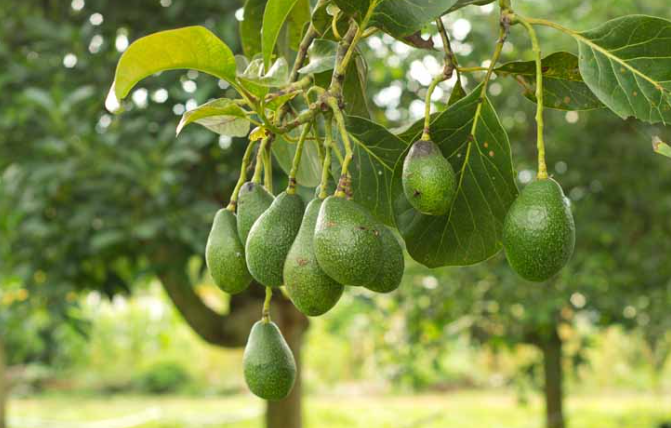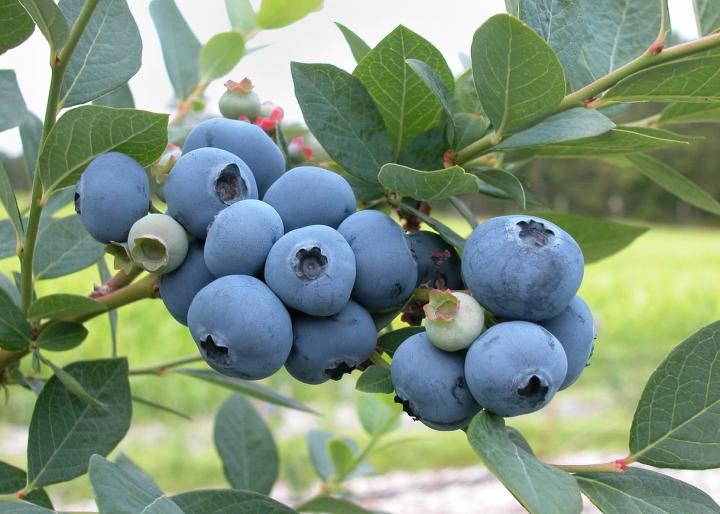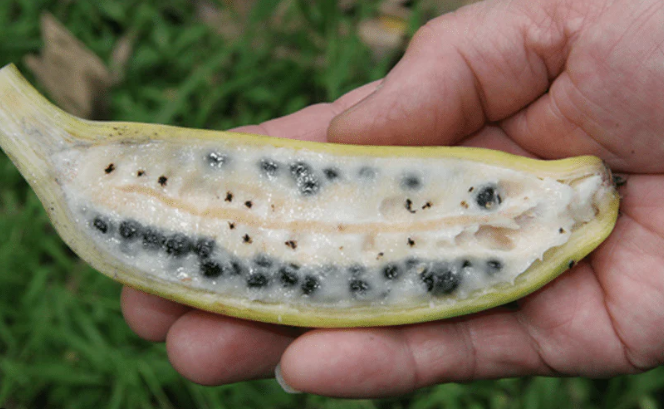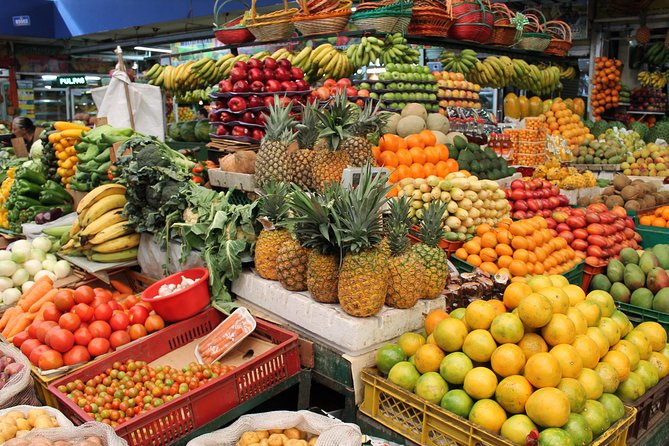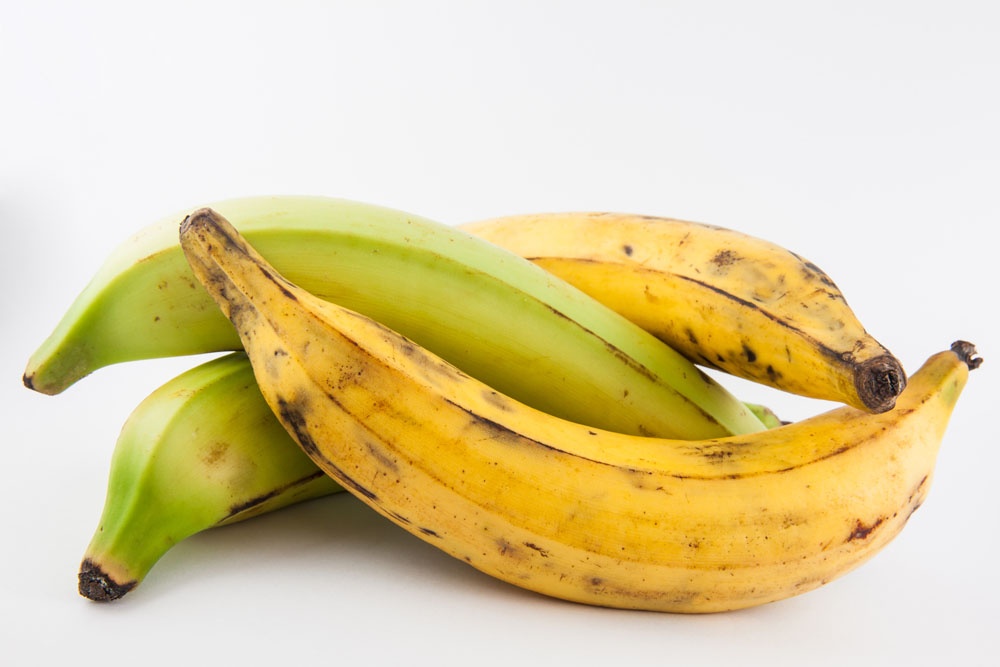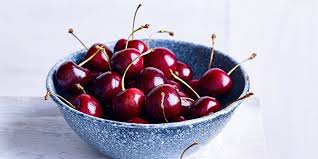If you’re on the lookout for a tasty and healthy way to include more vitamins and minerals in your diet, consider trying some fruits that start with “P.” There’s a wide variety, from pomegranates to papayas, that offers both flavor and nutrition.
In this article, we’ll take a closer look at 30 fruits with names that begin with the letter P. We’ve included images to help you recognize these delicious options.
Table of Contents
- A Detailed List of 30 Fruits Beginning with P
- 1. Papaya
- 2. Passionfruit
- 3. Persimmon
- 4. Pineapple
- 5. Plum
- 6. Pomegranate
- 7. Prickly Pear
- 8. Prune
- 9. Pummelo
- 10. Peaches
- 11. Plantain
- 12. Pequi
- 13. Poha Berry
- 14. Pineberry
- 15. Plumcot
- 16. Pink Pearl Apple
- 17. Pumpkin
- 18. Persian Lime
- 19. Phalsa
- 20. Pigface
- 21. Pili Fruit
- 22. Parsonage Pear
- 23. Poha Berry
- 24. Pigeon Plum
- 25. Pigeon Pea
- 26. Peumo Fruit
- 27. Pink Flowered Native Raspberry
- 28. Ponderosa Lemon
- 29. Purple Mangosteen
- 30. Petit Rouge Grape
- Conclusion
A Detailed List of 30 Fruits Beginning with P
Here’s an introduction to some of the most well-liked fruits that start with P:
1. Papaya

The papaya is a tropical fruit originally from Central America and Mexico. It tastes sweet and is full of vitamins and minerals. For example, it’s rich in vitamin C, which can strengthen your immune system, and vitamin A, which is important for your vision.
This fruit also has potassium, magnesium, and fiber. You can enjoy papaya in its raw form, cook it, grill it, add it to smoothies, or mix it into salads.
Papaya is commonly found in various tropical dishes and sauces. The seeds can be eaten too and are somewhat spicy, often used to flavor meals with a bit of zest.
2. Passionfruit
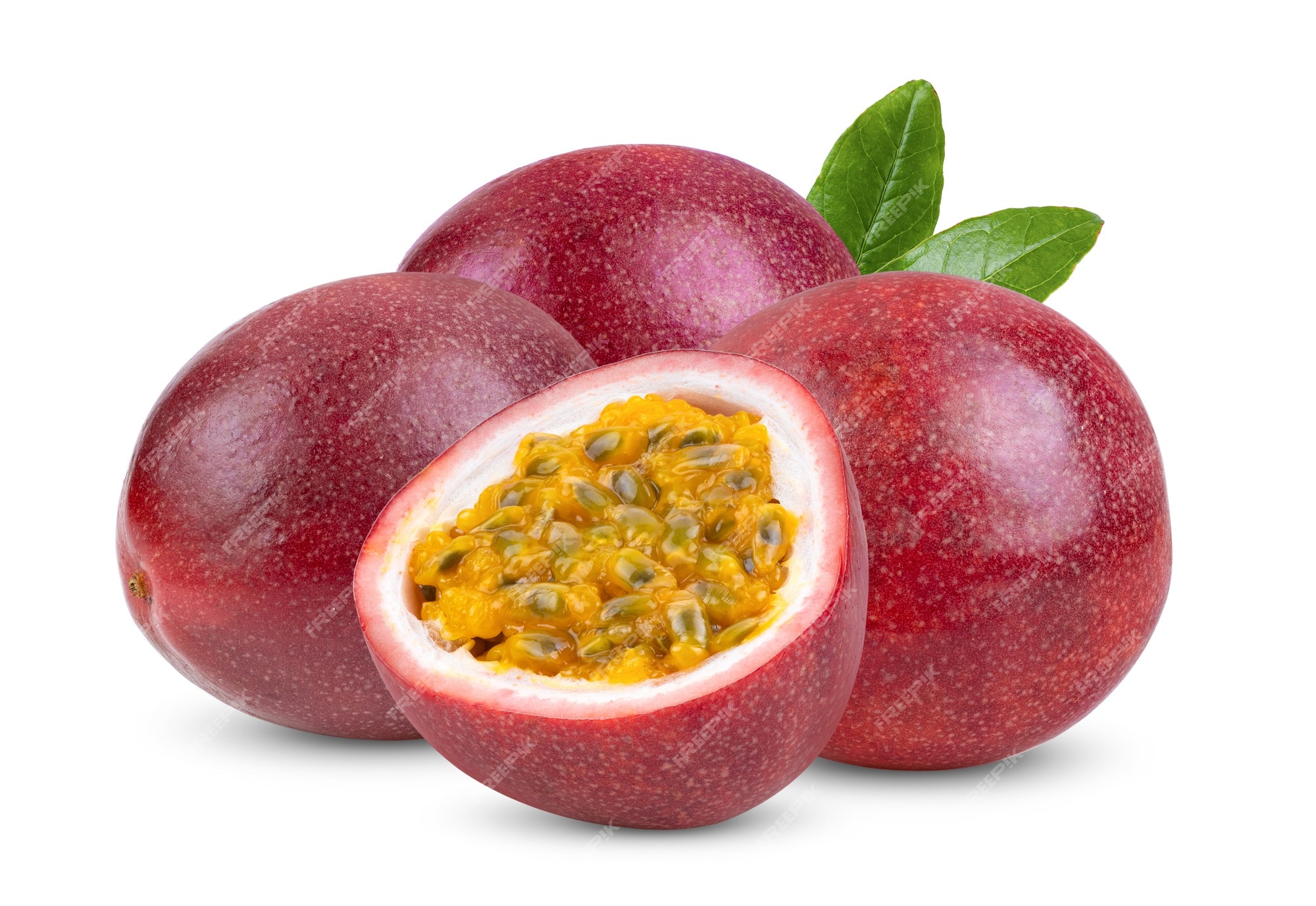
Passionfruit, native to South America, is another tropical variety with a unique tangy taste and a distinctive wrinkled appearance. It’s a good source of vitamin C, vitamin A, potassium, and fiber.
The fruit can be scooped out and eaten on its own, used to enhance the flavors in smoothies and desserts, or as the base for sauces and marinades. It’s also a favorite for adding a tropical twist to drinks and cocktails.
3. Persimmon
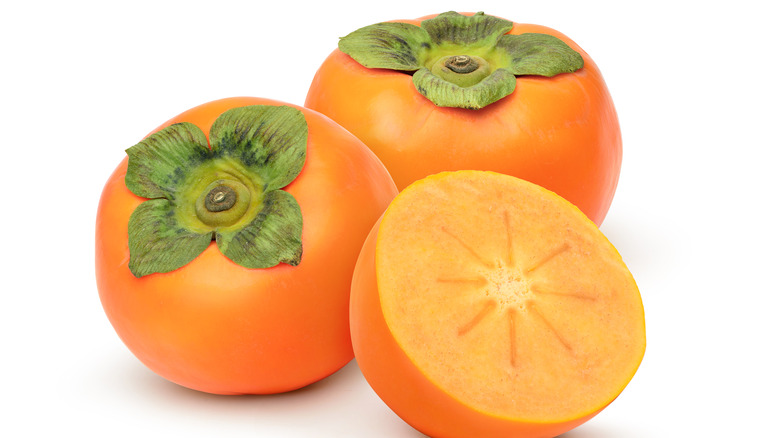
The persimmon is a sweet and mildly tangy fruit that originally comes from China and Japan. With a soft texture, it’s packed with vitamin A and also offers a dose of vitamin C, potassium, and fiber.
It can be enjoyed fresh, used in baking, and makes a great addition to desserts or salads. In several Asian cultures, persimmons are featured in traditional recipes.
4. Pineapple

The pineapple is a South American tropical fruit known for its sweetness. It has a high vitamin C content and provides manganese, which is essential for the body to metabolize carbohydrates and proteins.
This fruit is also noted for containing bromelain, an enzyme that can aid in protein digestion and reduce inflammation. Pineapples can be eaten as they are, or added to various dishes such as smoothies, cocktails, or grilled recipes. It’s a customary element in tropical food preparations.
5. Plum
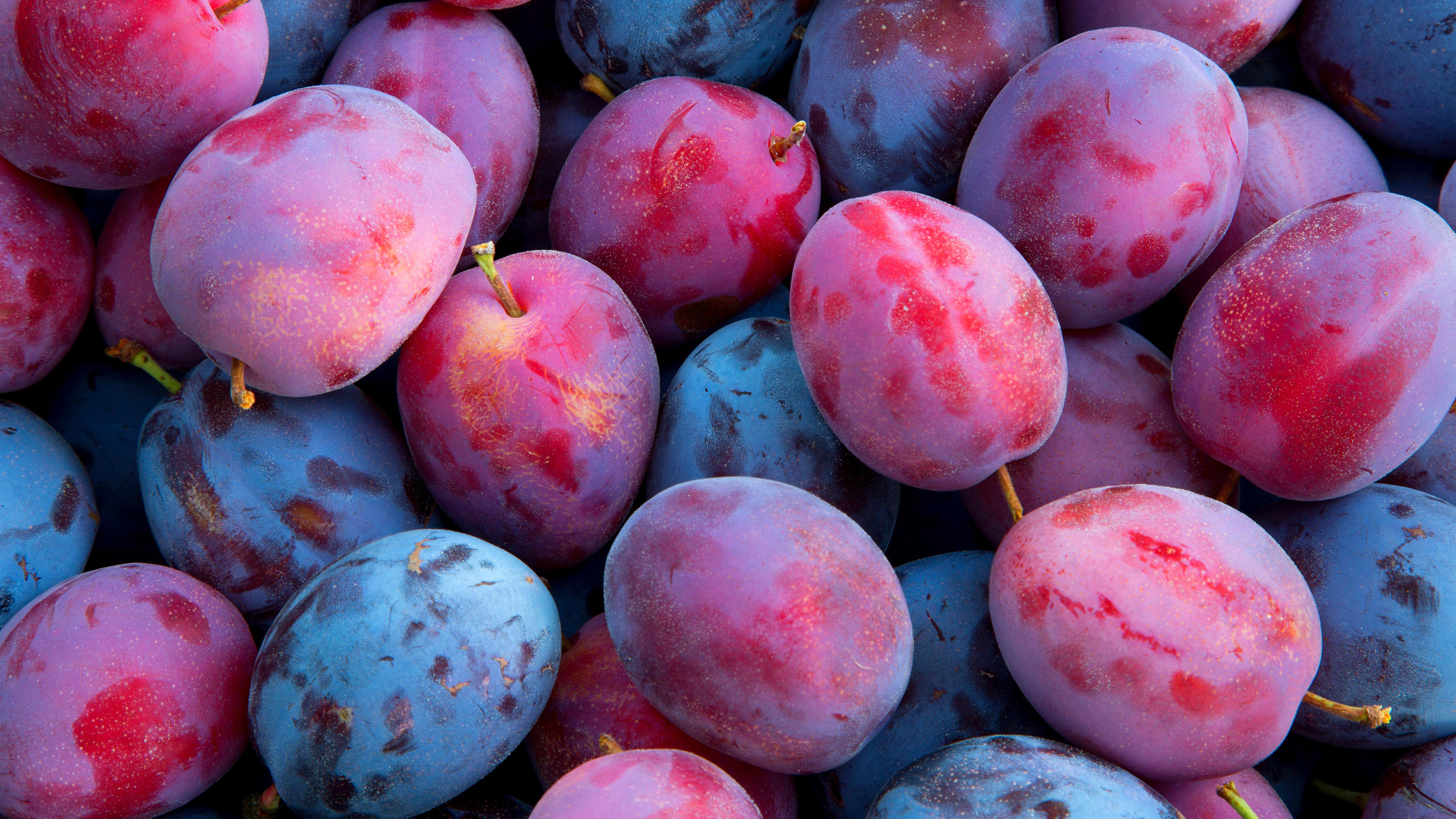
Plums have their origins in Europe and Asia and are appreciated for their sweetness and juicy quality. They are a good source of vitamin C, alongside vitamin A, potassium, and fiber.
These fruits are available in different shades including purple, red, yellow, and green. They can be consumed raw, incorporated into sweet dishes and smoothies, or into savory meals. Plums are also used to make preserves and jams.
6. Pomegranate
:max_bytes(150000):strip_icc()/GettyImages-157685468-fb148317607a47c1b4696f79b66016c4.jpg)
Native to the Middle East, the pomegranate is known for its vibrant red arils which are sweet and tangy. This fruit is a rich source of vitamin C, vitamin K, potassium, and fiber.
It’s often used to add color and flavor to salads and desserts. Plus, the arils can be enjoyed directly or incorporated into smoothies and juice blends.
7. Prickly Pear

The prickly pear, hailing from Mexico and the southwestern United States, is a sweet fruit with a unique appearance. It has a lot of vitamin C and also brings vitamin A, potassium, and fiber to the table. This fruit can be eaten raw or transformed into jams, jellies, or syrups. It’s also a common choice for adding flavor to various beverages and cocktails.
8. Prune

A prune is essentially a dried plum. It’s rich in fiber and has a sweet and sticky texture. Prunes are famous for helping with digestion due to their natural laxative effect.
They’re also full of antioxidants and carry a good amount of vitamin A, potassium, and iron. You can munch on prunes as they are, add them to desserts, pastries, or even savory recipes.
9. Pummelo
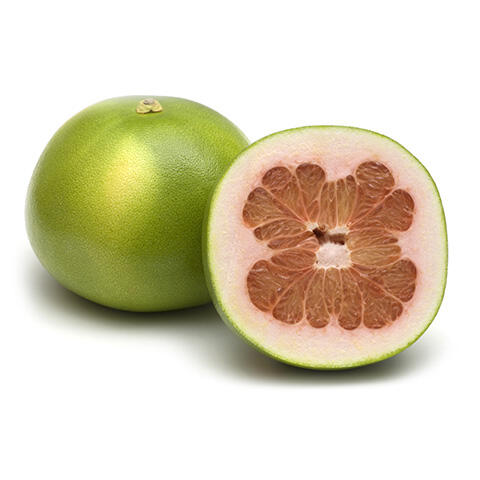
Known as the pummelo, this fruit is the largest citrus fruit and is closely related to the grapefruit. It boasts a sweet and mild flavor, but it’s less bitter than its cousin.
Pummelos are loaded with vitamin C, fiber, and other essential nutrients. They can be peeled and eaten fresh, or the segments can be used in salads and desserts, offering a refreshing citrusy taste without the tartness of other citrus fruits.
The pomelo, also known as the Chinese grapefruit, comes from Southeast Asia. This large citrus fruit has a sweet, somewhat tart taste with a bulky, ridged outer skin.
Pomelos are full of vitamin C and also offer vitamin A, potassium, and dietary fiber. This fruit tastes great on its own or you can mix it into salads, sweets, or refreshing drinks. In various Asian countries, people even make a traditional tea using the rind of the pomelo.
10. Peaches

Native to China, peaches are a soft, juicy fruit that belong to the stone fruit family. They’ve got plenty of vitamin A, along with vitamin C, potassium, and fiber.
You can enjoy peaches raw, bake them into desserts, blend them into smoothies, or use them to add a burst of sweetness to savory recipes. They’re also often cooked into jam or pie fillings, and they’re a key component of cobblers.
11. Plantain
:max_bytes(150000):strip_icc()/Plantains-2000-6f0179449fbd41bdb8b62ab536ee5a05.jpg)
Plantains are a tropical fruit that look similar to bananas, but they’re usually larger and more starchy with a hint of sweetness. They’re loaded with fiber, vitamin A, potassium, and magnesium.
Depending on how ripe they are, plantains can be enjoyed raw or cooked. They’re a staple ingredient in many Latin American dishes. You can slice and fry them to make plantain chips, or include them in dishes like stews and soups for some added flavor and texture.
12. Pequi
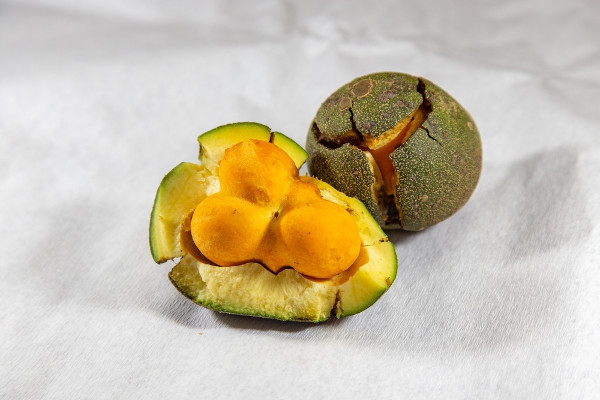
Pequi, known scientifically as Caryocar brasiliense, is from South America, mainly Brazil, and it sometimes goes by other names like Souari Nut or Brazilian Butter Tree.
This round tropical fruit, with its tough skin—green or yellow—houses a soft, yellow pulp inside. Its distinct nutty flavor can be an interesting addition to sauces and desserts. Pequi is nutritious, too, providing protein, fiber, and vitamin C among other nutrients.
13. Poha Berry
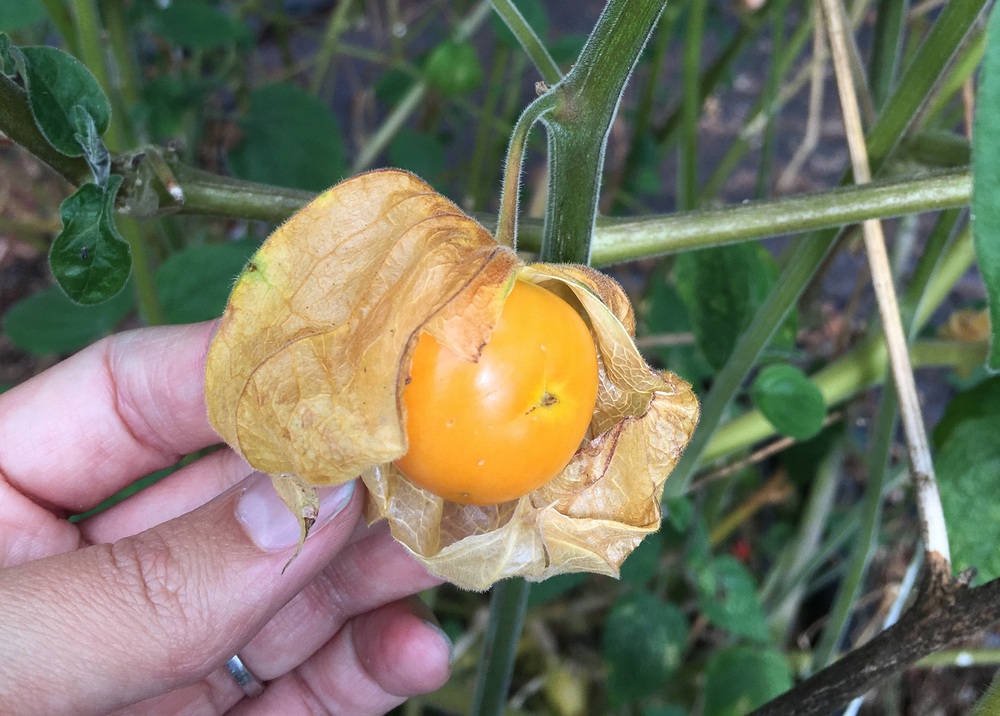
Poha Berry, which heralds from South America, has several different names including Cape Gooseberry, Peruvian Ground Cherry, and Goldenberry.
This small, round berry wears a delicate, orange or yellow skin and contains juicy, orange flesh with scattered small seeds. Poha berries are known for their sweet yet tangy taste. They can be enjoyed freshly picked or used in cooking and baking, such as in jam, jelly, and chutney recipes.
14. Pineberry
:max_bytes(150000):strip_icc()/plate-of-pineberries-922e2298656d471091b8c8d5b17f7459.jpg)
The pineberry is a relatively new fruit to the market. It’s a mix between a wild strawberry and the Chilean strawberry, with a unique taste that hints at both strawberries and pineapples.
Found across Europe, North and South America, the pineberry can be eaten on its own or it can be turned into delicious treats like jam or dessert toppings. This distinctive fruit is gaining popularity for its one-of-a-kind taste.
15. Plumcot
:max_bytes(150000):strip_icc()/Plumcot-3x2-GettyImages-486722952-cdf8db1f50ec414bb55a4999ef165dd1.jpg)
People have been savoring the flavors of plums for a very long time. They’re believed to be one of the earliest fruits cultivated. With a stone inside, plums can be enjoyed in their natural state or used as an ingredient in jams, pies, and other sweet treats.
Plumcots are a cross between plums and apricots, a delicious invention by Luther Burbank in the 1900s. Their taste carries notes of both fruits, and their color can range from red to yellow or even green. They bring a sweet-sour kick to the taste buds.
16. Pink Pearl Apple

Pink Pearl apples are known for their pretty pink insides that show up once you slice them open. Their unique color and a delightful combination of sweet and tart flavors make them great for adding a pop of color and taste to desserts or salads.
They’re also versatile for cooking, pairing well with meats like pork and fish to create an exciting taste. What sets these apples apart is the stunning pink interior that’s reminiscent of rose petals. They bring both a distinctive look and a lovely blend of sweet and tart to the table.
17. Pumpkin

Pumpkins aren’t just for carving at Halloween—they’re a flavorful fruit that can be cooked in many different ways, like boiling, baking, or mashing. They’re full of beta-carotene and essential fatty acids, and they have a gentle, earthy taste that works well in numerous recipes across the globe. Whether it’s in soucy dishes or as the star of sweet treats, pumpkins are quite adaptable.
Pumpkins are versatile and can be used in all kinds of food like soups, cakes, muffins, salads, and pies.
People often carve pumpkins for Halloween in the USA and other places too.
18. Persian Lime
:max_bytes(150000):strip_icc()/limes1200x-58a4b81e5f9b58a3c9195504.jpg)
Persian limes are a very familiar kind of lime you’d find when shopping. Compared to key limes, they’re bigger because they have a thicker skin.
Persian limes are not as tart and don’t have the bitter taste of key limes. Plus, they last longer, which is great for cooking and making drinks like margaritas or mojitos.
You can squeeze the juice of Persian limes into sauces, marinades, or just water for a cool drink when it’s warm. The zest from the skin is also good for boosting flavors in recipes.
19. Phalsa

Phalsa are tiny berries that turn red-purple when they’re ready to eat, and they taste a bit sweet and tart, like blueberries. They’re used in sweets and drinks.
These berries come from India and Pakistan, but nowadays you can find them in many countries. More people now enjoy them because they taste unique and are healthy.
Phalsa berries are loaded with antioxidants which fight diseases like cancer and heart disease. They also have a bunch of good stuff like vitamins A, C, E, K, B6, folate, calcium, iron, magnesium, and potassium to keep you healthy.
20. Pigface
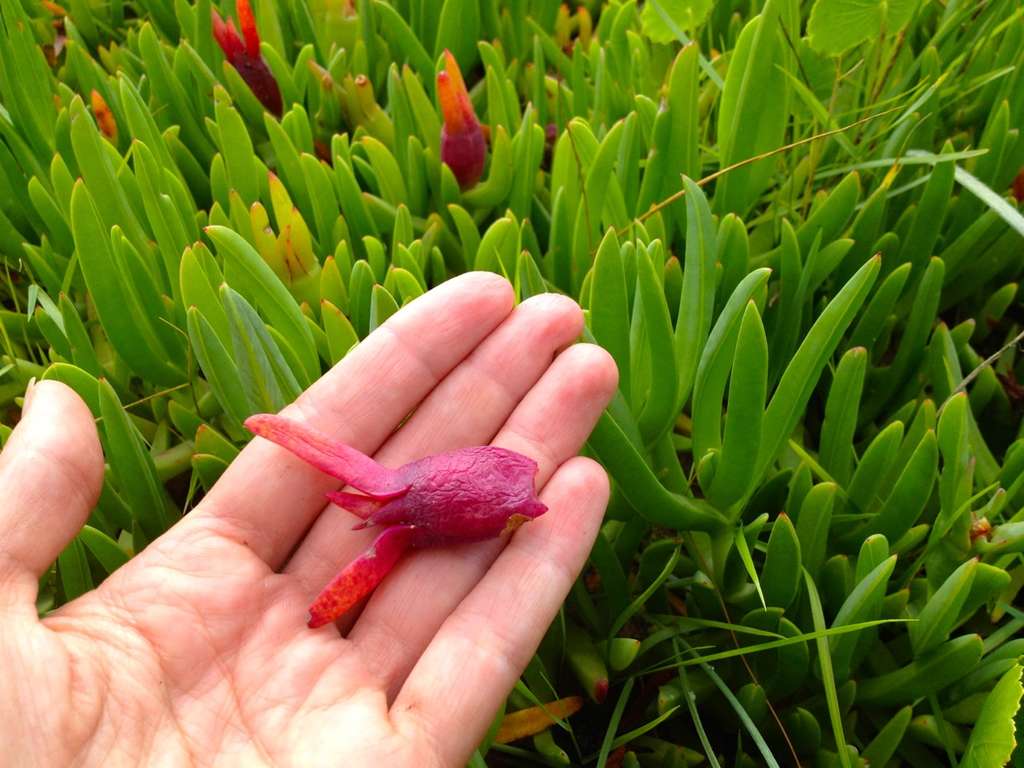
Pigface, or Carpobrotus rossii, is a plant that naturally grows in Australia. It also has other weird names like Ice Plant, Hottentot Fig, and Pink Beachy.
It’s a plant that stays close to the ground, has thick leaves, and pretty pink or purple flowers. People often use it to cover the ground in gardens, for landscaping, and to stop soil from eroding. It can handle not having much water and salty conditions, so it’s perfect for beaches.
21. Pili Fruit
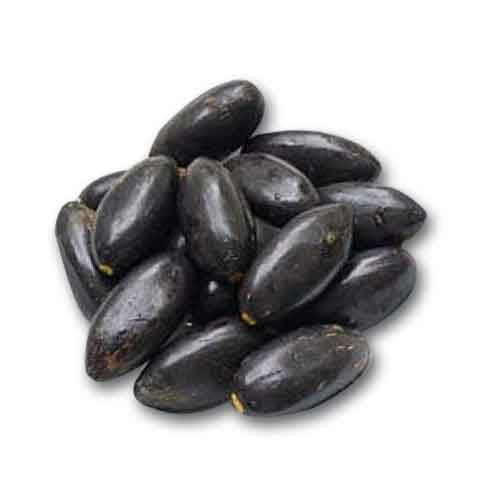
Pili fruit, or Canarium Ovatum, comes from the Philippines and tastes sweet and nutty. It has a soft, creamy inside. The outside is brown or green, while the inside is white or yellow and feels soft and juicy but a bit fibrous.
22. Parsonage Pear
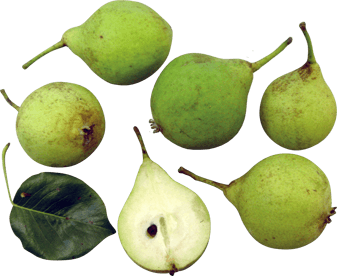
The Parsonage Pear is a kind of European Pear from the 1800s. It’s sweet and rich and creamy to eat. It has a golden-yellow outside.
It’s good for eating just like that, for canning, baking, and making jams. The fruit is sweet and full of juice on its own. It comes in colors like round or pear-shaped with smooth skin.
23. Poha Berry

Poha Berry, or Physalis Peruviana, is a plant with sweet and sour berries that are reddish-orange when they’re ripe. It comes from South America.
You can eat them straight or turn them into jam, sauce, or add them to smoothies. They’re packed with fiber and vitamin C, which is great for your health.
24. Pigeon Plum
Pigeon Plum, or Coccoloba Diversifolia, is a fruit from the Caribbean and Central America. It’s sweet and tart with a bit of a citrusy flavor and usually eaten fresh or in jams and jellies. The skin turns from green to yellow-orange when it’s right to eat.
25. Pigeon Pea
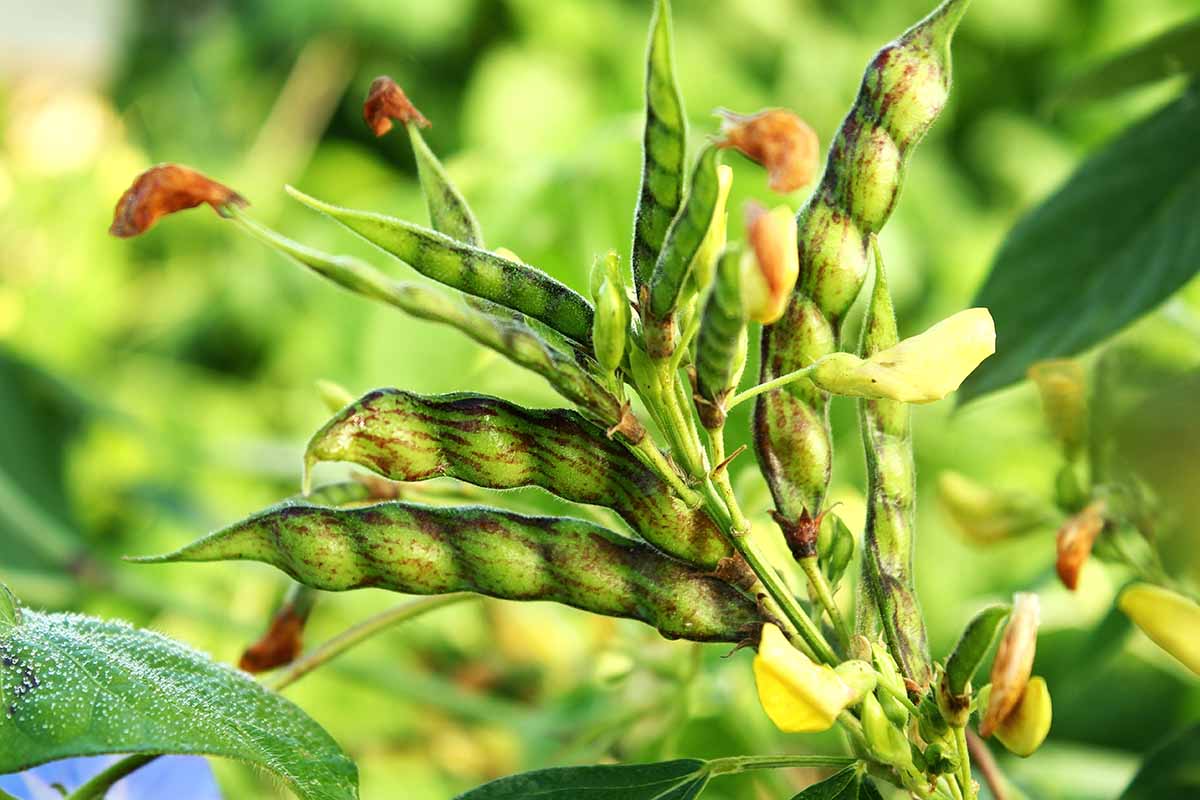
Pigeon Pea is a legume from India and parts of Africa. It’s got a nutty taste and can be enjoyed fresh or dried. The pods are green at first and then change to yellow-brown when they are ripe.
They’re full of protein, fiber, and vitamins like A and C, as well as minerals such as calcium, iron, and potassium. They’re very good for you and tasty in many different foods.
26. Peumo Fruit

Peumo, or Cryptocarya alba, is a Chilean fruit that’s also grown in other South American countries. It’s in the laurel family and is either round or oblong. The skin is rough and green when not ready, but dark purple or black when it’s time to eat.
27. Pink Flowered Native Raspberry
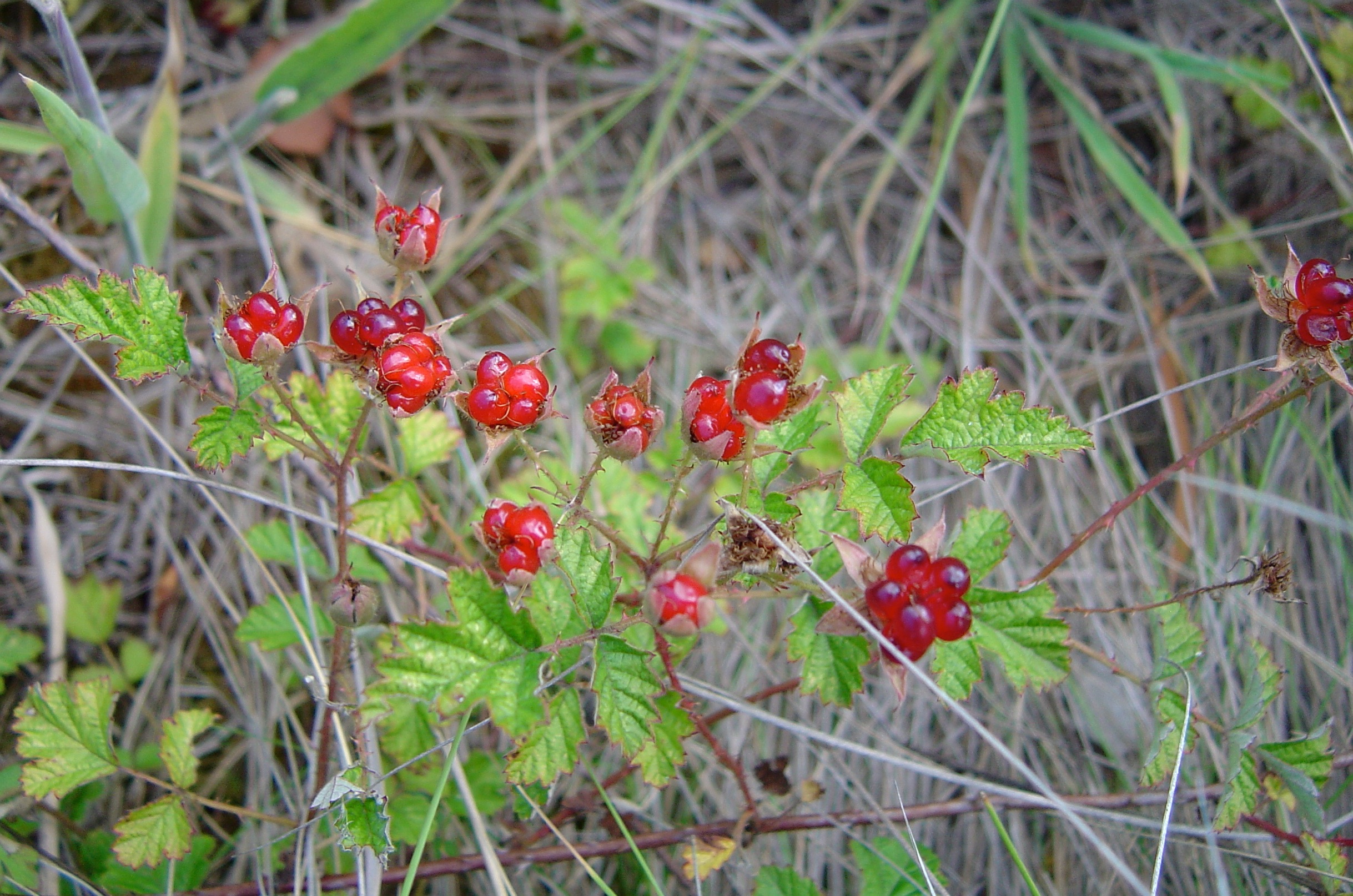
The Pink Flowered Native Raspberry, or Rubus parviflorus, grows across North America. You can find this plant in various places like woods, fields, and wet areas. It’s very common in the western parts of the United States like California, Oregon, and Washington.
This raspberry plant is a bush that can get up to 3 feet tall, and has sharp thorns on its stems. It has leaves that are a deep green color with 3 to 5 parts and it grows pink flowers during spring and summer. After the flowers, the plant produces small, red berries that are ready to eat in summer or autumn.
A lot of animals, such as birds and small furry creatures, eat these berries, and people can eat them too. They’re good for making sweet spreads like jam, and native people in North America have used the leaves of this plant for healing.
28. Ponderosa Lemon
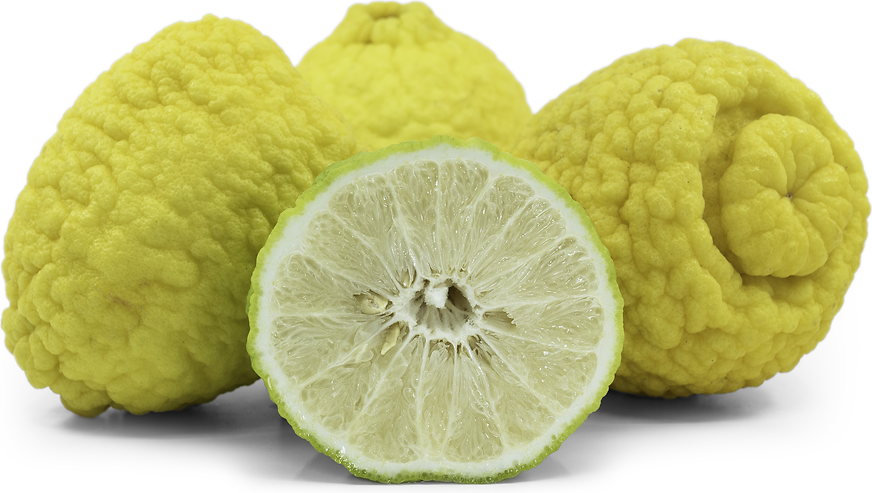
The Ponderosa Lemon, also known as Citrus limon ‘Ponderosa’, is like a mix between a regular lemon and a citron. This big fruit has a unique skin that’s rough and thick, and inside, it tastes both sweet and sour.
This special type of lemon comes from the United States and probably appeared around the 1800s. People like to grow it in their yards, and some farmers grow it too. Usually, people pick these lemons in fall or winter, and they can be used in lots of different ways, such as for cooking or just to make food look nicer.
29. Purple Mangosteen

In places like Indonesia, Thailand, and Malaysia in Southeast Asia, Purple Mangosteen or Garcinia mangostana is a small fruit that people really enjoy for its flavor. Many say it tastes something like strawberries and pears mixed together.
The Purple Mangosteen is not very big and usually is about as small as an orange. It has a hard, dark purple shell that you don’t eat. But underneath this shell, you find really soft, white pieces of fruit that are delicious. People like to eat the fruit as it is, but also use it to make drink mixes, smoothies, and desserts.
30. Petit Rouge Grape

Originally from France, the Petit Rouge grape is a small, red grape with a sweet taste that reminds you of fruit. It’s mostly used to make wine, but people also like to eat these grapes just the way they are.
This grape is quite new, having been created in the late 1900s as a mix of Pinot Noir and Cabernet Sauvignon grapes. Its high sugar levels and low sourness make it perfect for wine making.
Conclusion
There is a big variety of tasty and healthy fruits that start with the letter P. For example, there’s papaya, passion fruit, peach, pear, persimmon, and plum.
Each of these fruits has its own special taste and brings good things for your health, making them a fantastic choice for your diet. You can have fun trying them in different ways, whether that’s eating them fresh, cooking with them, or blending them into a smoothie. So next time you’re looking for new fruits to try, remember these choices that start with P.
We hope this article has given you more ideas for fruits to try and enjoy. Have fun exploring the world of fruits!


